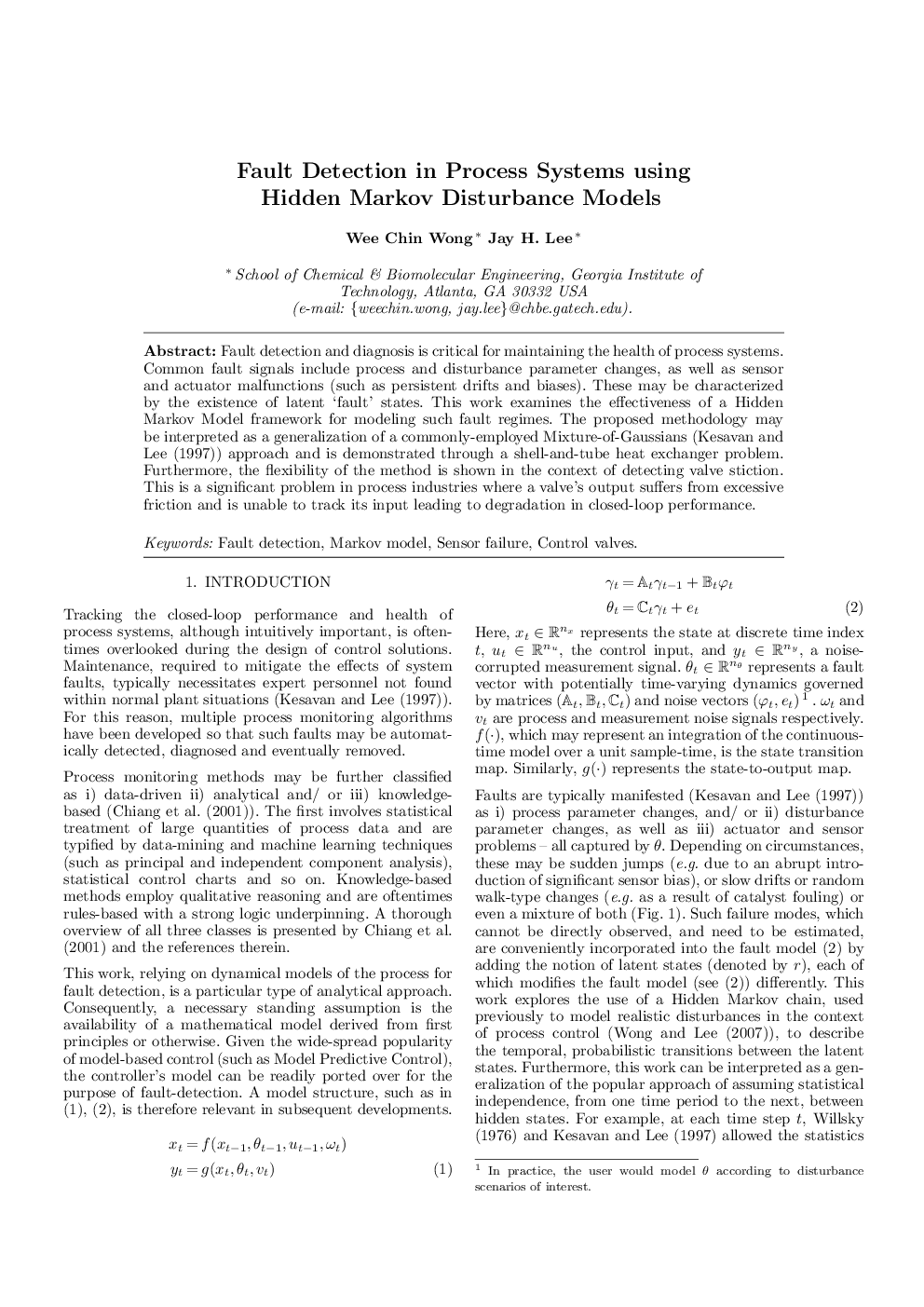| Article ID | Journal | Published Year | Pages | File Type |
|---|---|---|---|---|
| 710726 | IFAC Proceedings Volumes | 2009 | 6 Pages |
AbstractFault detection and diagnosis is critical for maintaining the health of process systems. Common fault signals include process and disturbance parameter changes, as well as sensor and actuator malfunctions (such as persistent drifts and biases). These may be characterized by the existence of latent ‘fault’ states. This work examines the effectiveness of a Hidden Markov Model framework for modeling such fault regimes. The proposed methodology may be interpreted as a generalization of a commonly-employed Mixture-of-Gaussians (Kesavan and Lee (1997)) approach and is demonstrated through a shell-and-tube heat exchanger problem. Furthermore, the exibility of the method is shown in the context of detecting valve stiction. This is a significant problem in process industries where a valve's output suffers from excessive friction and is unable to track its input leading to degradation in closed-loop performance.
